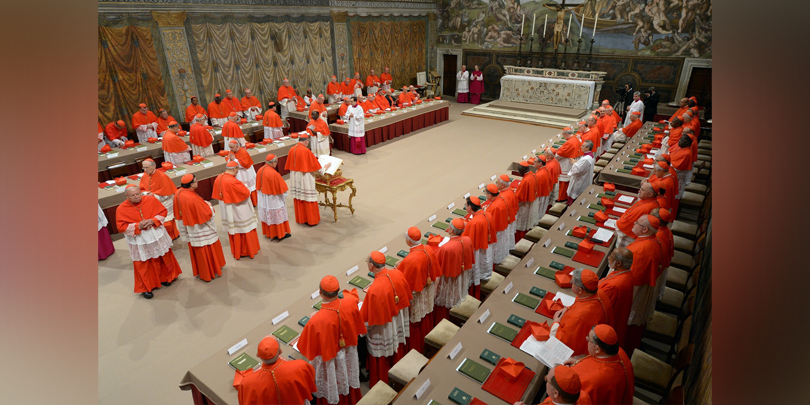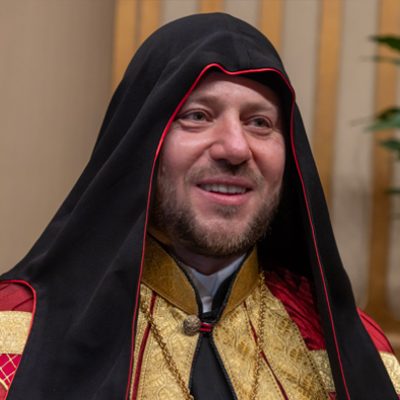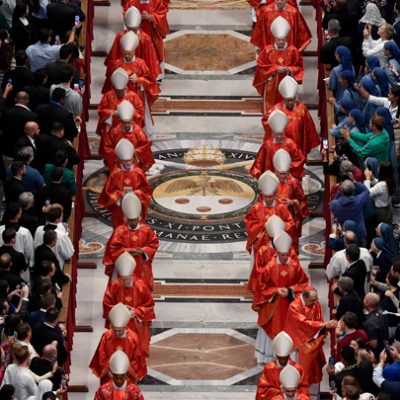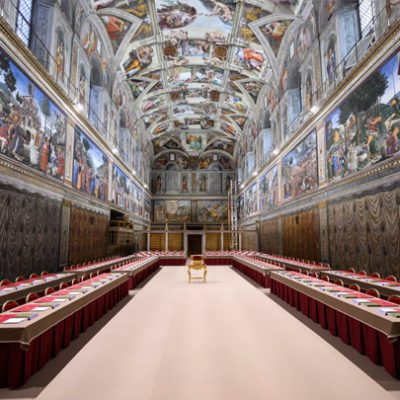
The conclave to elect a new pope, scheduled to begin May 7, is governed by two texts: a rule book and a prayer book. Source: CNS.
The rule book is the apostolic constitution, Universi Dominici Gregis (Shepherd of the Lord’s Whole Flock), which was issued by St John Paul II in 1996 and amended by Pope Benedict XVI in 2007 and again in 2013.
The prayer book is the Ordo Rituum Conclavis (Rites of the Conclave), which was approved by St John Paul II in 1998, but not released until after his death in 2005. If Pope Francis made any adjustments to the rites, they had not been announced as of yesterday.
The Ordo Rituum Conclavis, which has prayers in Latin with an Italian translation, begins by noting that the election of a pope “is prepared for and takes place with liturgical actions and constant prayer”.
The rites of the conclave begin with the public Mass “for the election of the Roman pontiff,” which is set to be celebrated on May 7 at 10am local time in St Peter’s Basilica.
After celebrating the morning Mass, the rule book calls for the cardinals to gather in the late afternoon in the Pauline Chapel of the Apostolic Palace and then process into the Sistine Chapel.
The cardinals will take an oath to “faithfully and scrupulously observe” the rules for electing a pope. They also promise to keep everything having to do with the election secret.
When the last cardinal has placed his hand on the Book of the Gospels and sworn the oath, Archbishop Diego Ravelli, Vatican master of liturgical ceremonies, will say: “Extra omnes,” ordering all those not directly involved in the conclave out of the Sistine Chapel.
The cardinals decide together whether they will cast one ballot on the first evening; traditionally they have done so, burning the ballots with a chemical additive that produces black smoke pouring from the Sistine Chapel chimney.
After that, two ballots can be cast each morning and two each afternoon until a candidate garners two-thirds of the votes. On the fourth day, if no one has been elected, the cardinals pause for extended prayer.
When someone reaches the two-thirds threshold – 89 votes if, as reported, 133 cardinals enter the conclave – he will be asked by the most senior ranking cardinal, Cardinal Pietro Parolin, “Do you accept your canonical election as supreme pontiff?”
The ballots, along with the cardinals’ notes or running tallies of the votes, are burned with a chemical additive to produce white smoke and announce to the world that there has been a successful election.
Then the senior cardinal deacon, French Cardinal Dominique Mamberti, will go to the central balcony of St Peter’s Basilica and declare to the public, “Habemus papam” (“We have a pope”).
FULL STORY
How the conclave works: It’s guided by a rule book and a prayer book (By Cindy Wooden, CNS)






